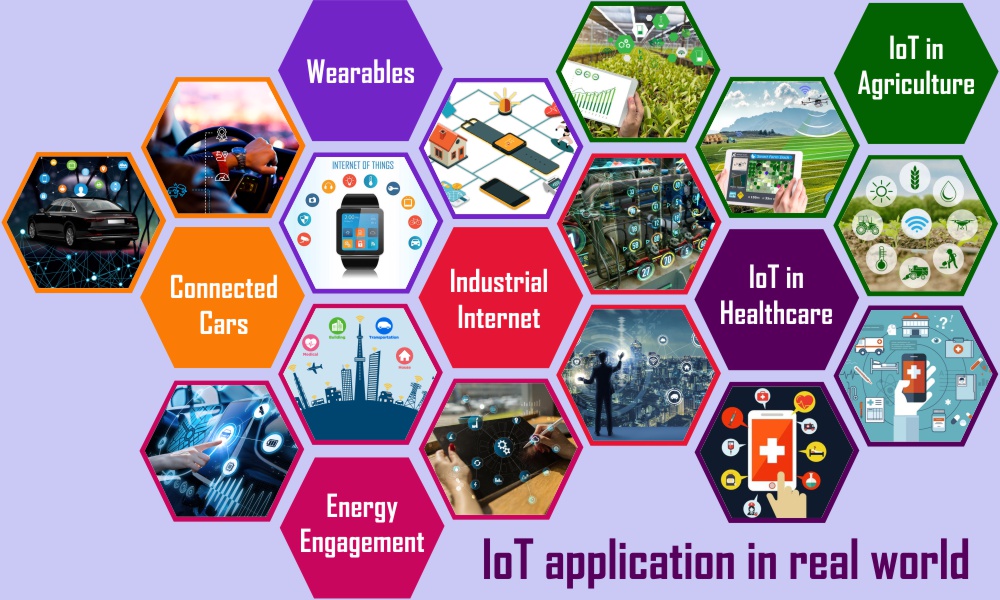IoT (Internet of Things) is a platform where embedded devices are connected to internet to exchange and collect data with each other. IoT allows devices to collaborate, interact and learn from each other’s experiences.
IoT experts are continuously exploring for the making real-world IoT applications happen across different utility domains. IoT is being deployed in various domains. Some of them are listed below:
IoT in Healthcare:
Internet of Things has opened up a world of possibilities in medicine. Before IoT ways of interaction between patients’ and doctors were limited to visits, and text and tele communications. Doctors were not able to monitor patient health remotely.
Internet of Things (IoT)-enabled devices have made remote monitoring of patients’ possible. This helps to keep patients safe and healthy and empowers doctors to deliver superlative care. It has also increased patient engagement and satisfaction as interactions with doctors have become easier and more efficient.

IoT in Agriculture
IoT has brought great impact in agriculture sector. IoT has been a driving force behind increased agricultural production at a lower cost.
New smart farming applications based on IoT technologies enables the agriculture industry to reduce waste and enhance productivity from optimizing fertilizer use to increasing the efficiency of farm vehicles’ routes.
IoT-based smart farming is a system built for monitoring the crop field with the help of sensors (light, humidity, temperature, soil moisture, etc.) and automating the irrigation system. The farmers are able to monitor the field conditions from any place. IoT-based smart farming is more efficient as compared to conventional approach.

Industrial Internet:
Industrial Internet also known as Industrial Internet of Things (IIoT) empowers industrial engineering with big data analytics, sensors, software to create brilliant machines.
Jeff Immelt, CEO, GE Electric said, “IIoT is a beautiful, desirable and investable” asset. Communication through data can be more accurate and consistent with the IIoT based smart machines. This data help companies pick their inefficiencies and problems sooner.

Connected Cars:
The automotive digital technology is on a rise as auto engineers are ardently looking to go with IoT to make vehicles function optimally and effusively. A connected car can operate itself as per pre-stored inputs and based on sensors and can manage its operations itself.

Wearables:
The use of smart wearables is spreading as electronics are miniaturized, sensor technology improves, and computing power grows. New materials, designs, energy storage, scavenging technologies and production techniques are driving improvements in performance, functionality and usability. However, as the physical and digital worlds converge into the ‘Internet of Everything’, connectivity has become the limiting factor, or ‘weakest technological link’. It is paramount for power, data transfer and 24/7 availability.

Consequently, with the IoT, existing network infrastructure creates opportunity for integration between computer system and physical world so that object can be activated and controlled remotely. Join Dronacharya College of Engineering, Gurgaon one of the Top Engineering College in Delhi NCR to study Electronics and Communication Engineering course to open the door to a bright future.


